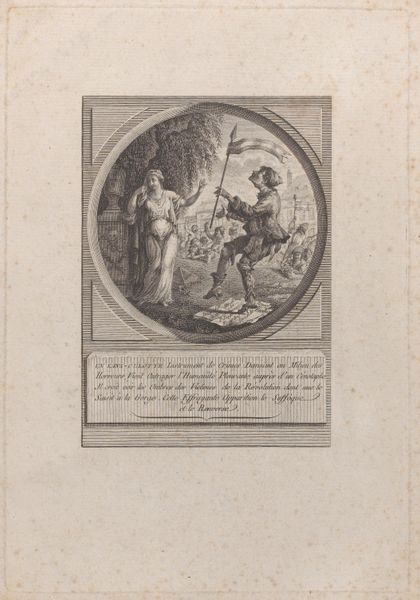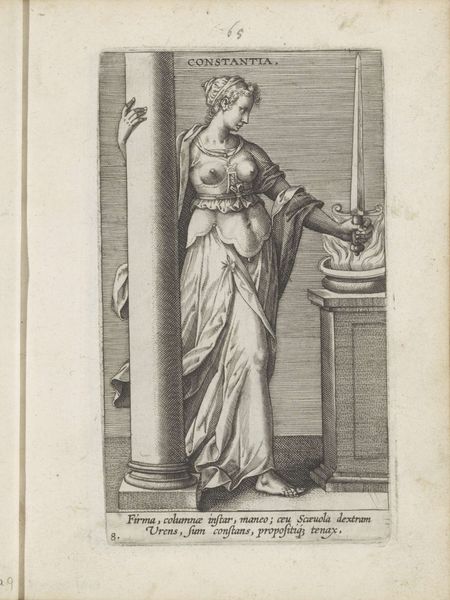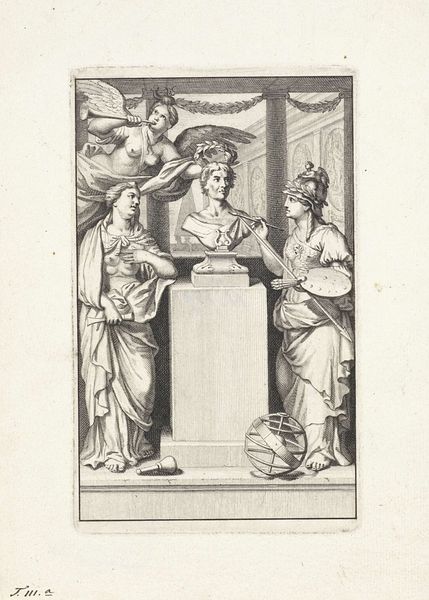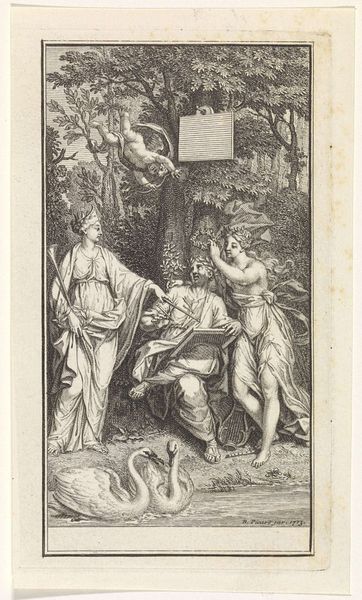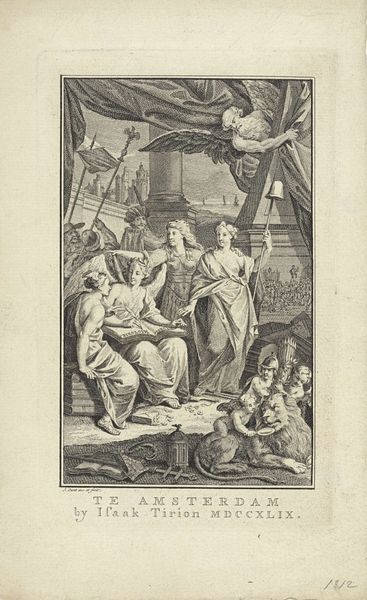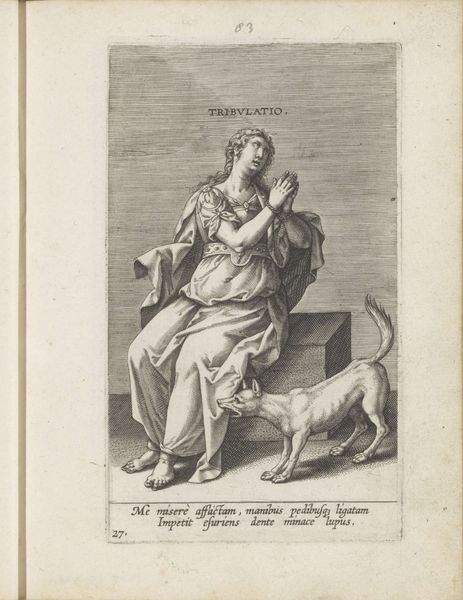
Titelpagina voor: L. Smids, Oranjes overtogt naar Engeland : of beschryvinge van Romein de Hooges printen, 1689 1689
0:00
0:00
print, engraving
#
allegory
#
baroque
# print
#
figuration
#
history-painting
#
engraving
Dimensions: height 126 mm, width 81 mm
Copyright: Rijks Museum: Open Domain
Curator: Looking at this engraving from 1689, what strikes you? Editor: The immediate impression is one of controlled chaos. There's a density of figures and text packed into a relatively small space. It's quite dynamic, with lines of action converging at various points. I wonder, what is it depicting? Curator: This is the title page for L. Smids’s book, "Oranjes Overtogt naar Engeland," which translates to "Orange's Passage to England." It illustrates William of Orange's voyage that led to the Glorious Revolution. Editor: Ah, that historical context sheds some light. I see William commemorated as a defender of religious freedom. The female figures strike me—a blend of classical allusion with contemporary reference? Curator: Precisely! You’ve identified Liberty depicted on the right, recording William’s legacy. Then you have Prudence and History flanking her, immortalizing the event. See how History strikes the plate with a hammer, securing this historical event. Editor: And I observe that, even on the scroll on which she sits, we can find a detailed etching; within the print we find further documentation— layers upon layers. The linear precision of the engraving emphasizes detail but gives it an almost cool distance. Curator: It’s the Baroque aesthetic—full of dynamism but carefully crafted to convey symbolic meaning. Every figure and detail is included to establish continuity between William of Orange and a history of noble defenders of Liberty. Note the angels hovering over the cartouche, they seem almost frenzied to secure this narrative, as they draw it. Editor: Indeed. A tightly interwoven composition of cultural aspiration. There's an interplay between the visual elements and the inscription. Did prints like this serve primarily a documentary purpose, or was there more of an aspiration to elevate William’s claim through symbolism? Curator: Both, I believe. These prints would circulate widely, and visually cement the legitimacy of the revolution. What the eye grasps imprints on the memory, reinforcing narratives through visual metaphors. Editor: A potent reminder of the interplay of aesthetics, politics, and cultural memory in shaping our perception of history. The meticulous line work carries far more than mere surface detail, echoing a complex interplay of aspirations and narratives.
Comments
No comments
Be the first to comment and join the conversation on the ultimate creative platform.


